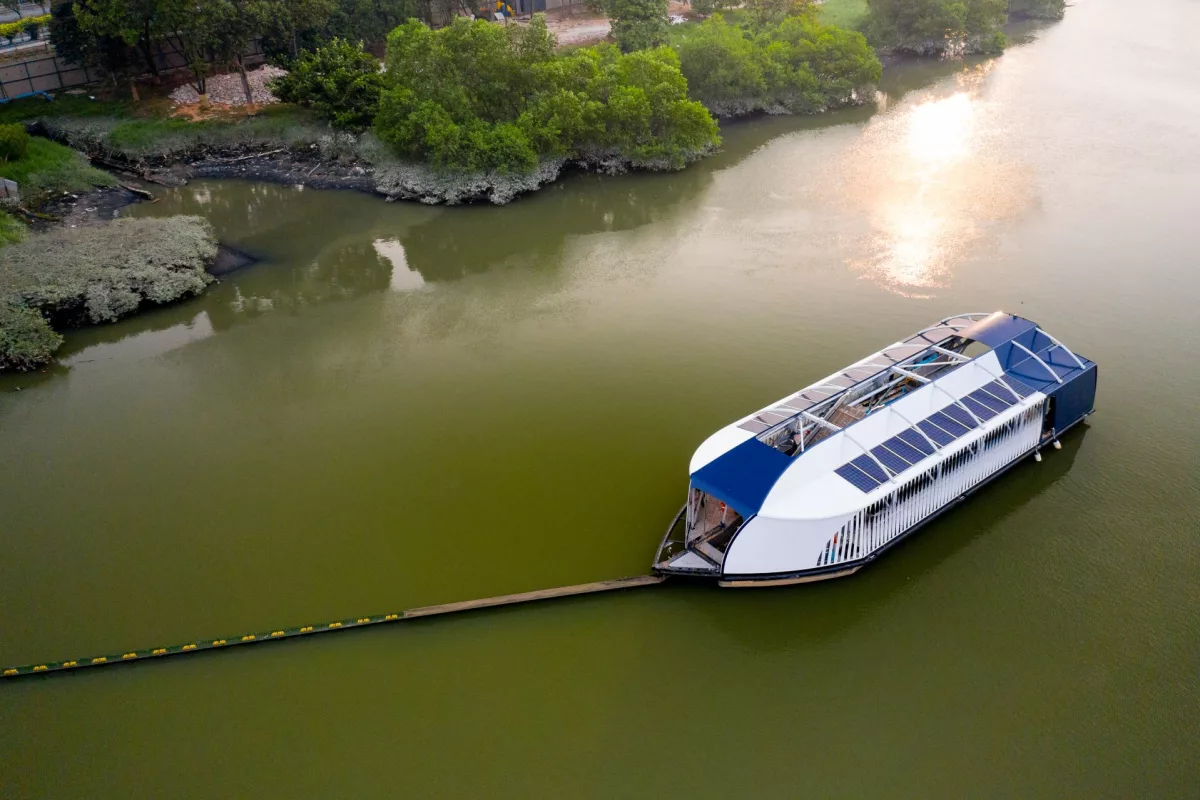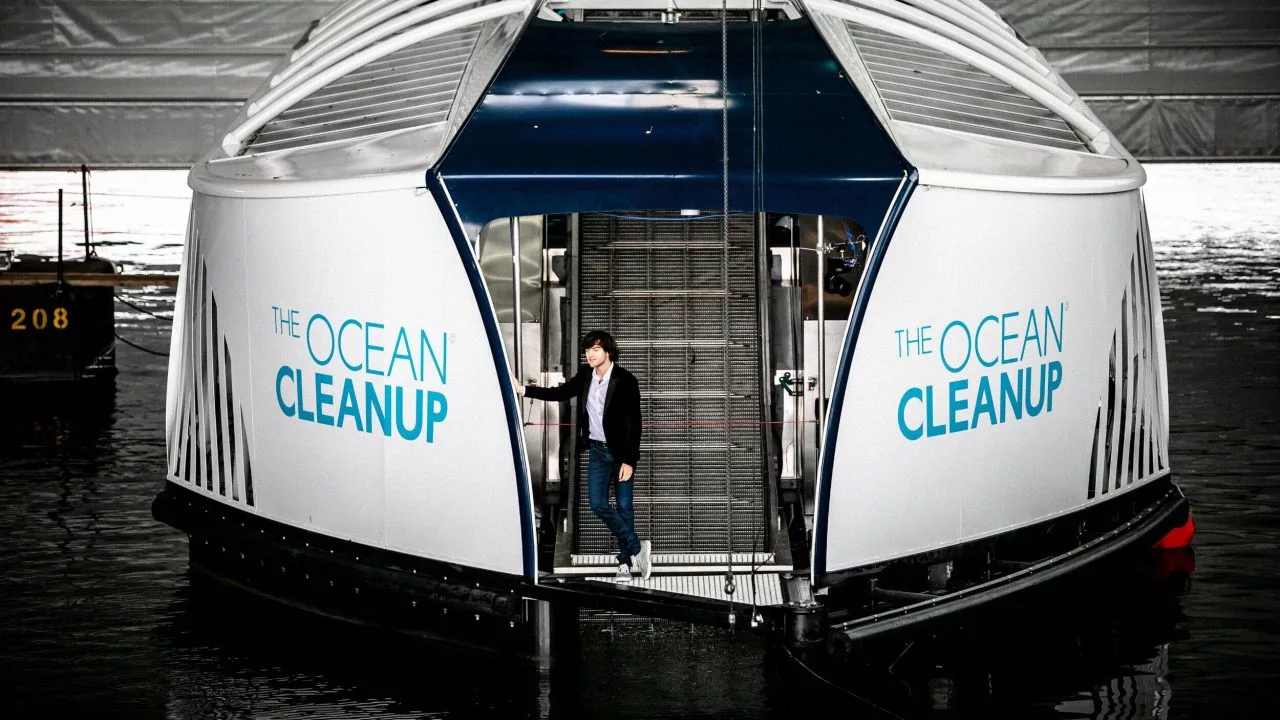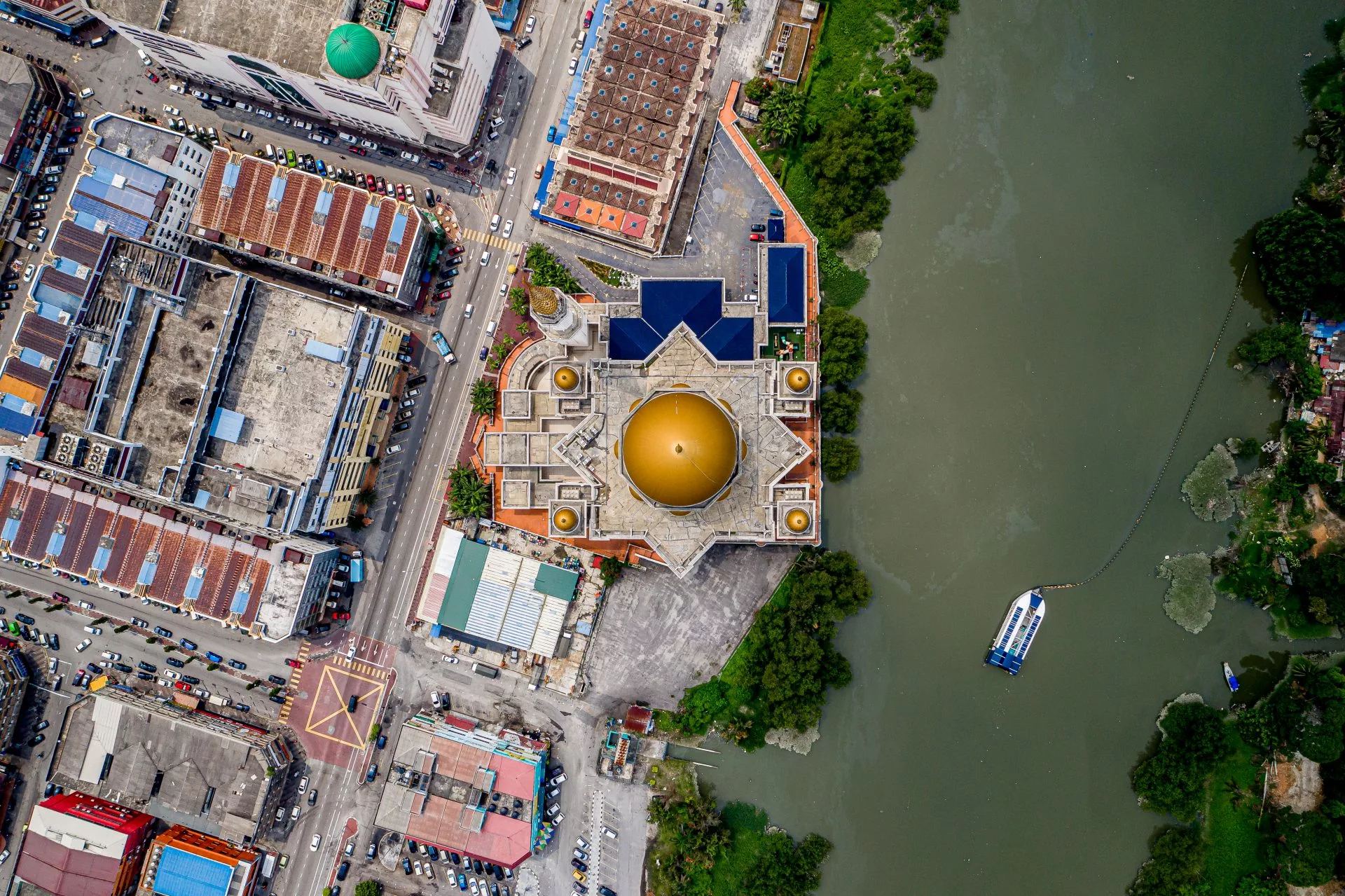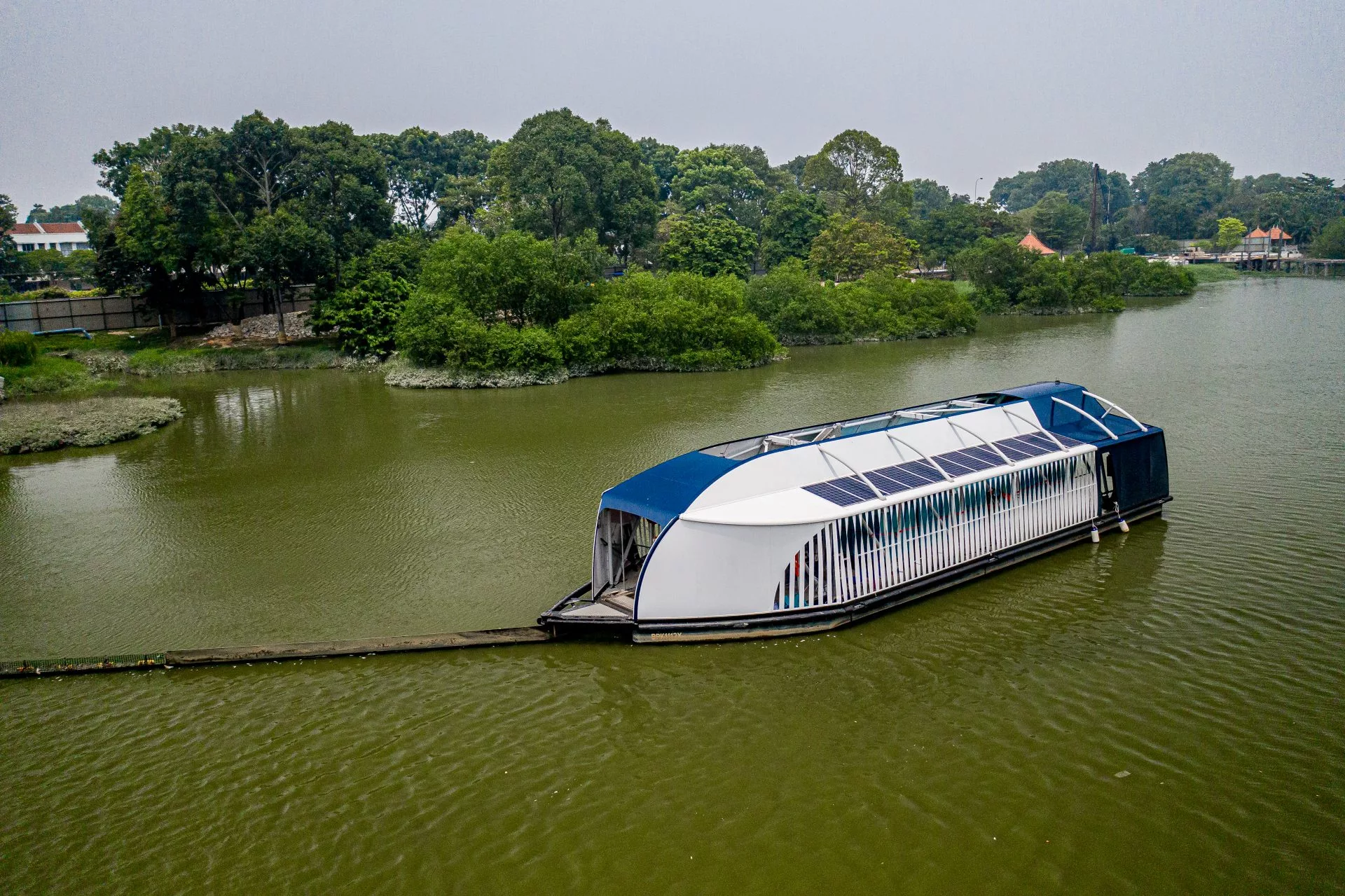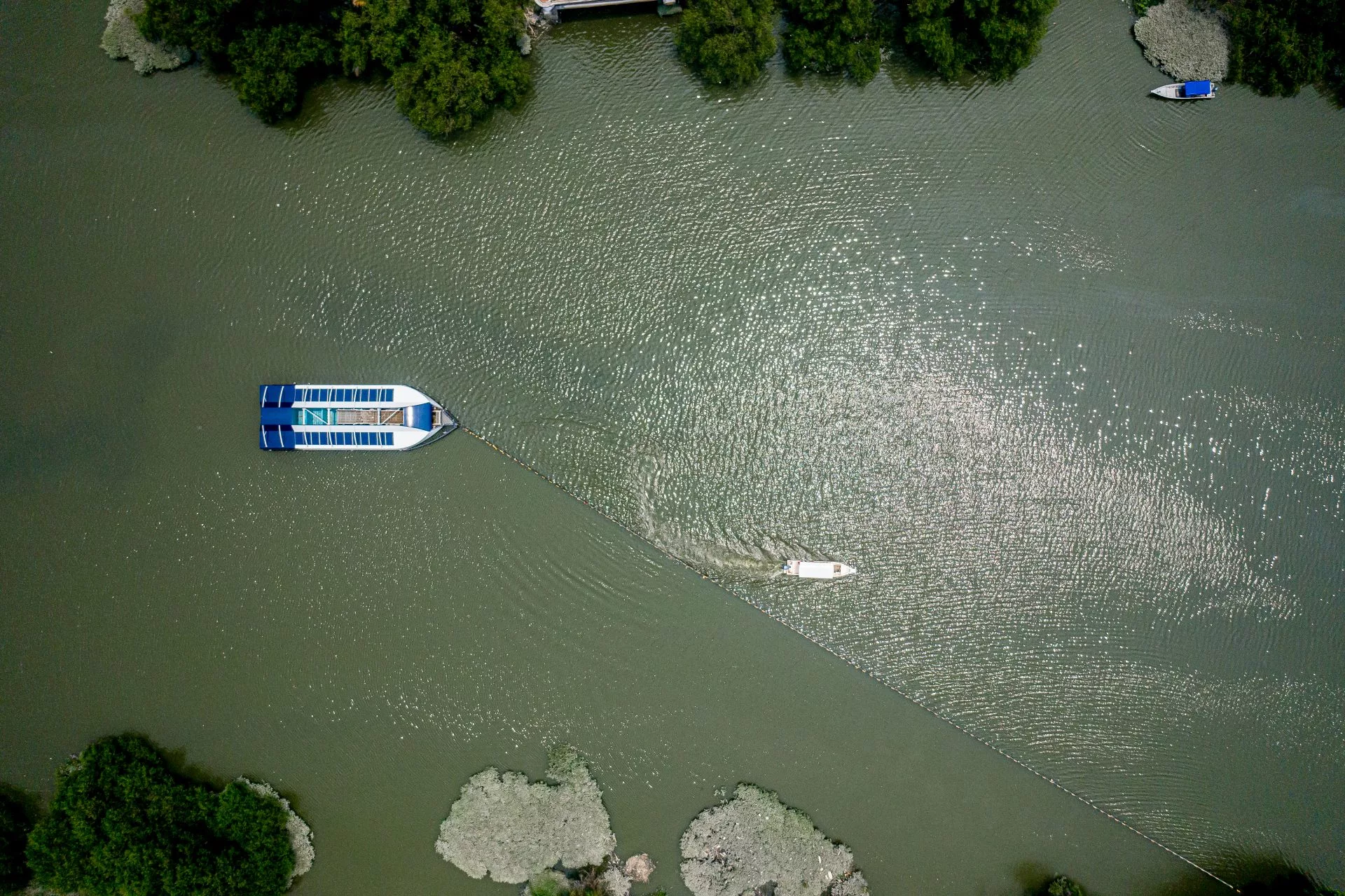The mountain of plastic waste building up in the ocean is a complex problem that will require a variety of creative solutions. With its huge barriers now successfully collecting trash from the Great Pacific Garbage Patch, the Ocean Cleanup Project is heading upstream to tackle the issue closer to the source. Its newly unveiled Interceptor is designed to be installed in rivers and collect plastic waste before it reaches the ocean, with two systems already up and running in the waterways of Asia.
There is already a huge amount of plastic waste in the ocean, and plenty more continues to pour into it every day by way of the world’s river systems. To get a better grasp on the issue at hand, the Ocean Cleanup Project undertook a study in 2015 that analyzed more than 40,000 ocean-bound rivers, finding much of the plastic waste entering the seas could be traced to just 20, most of which where on the Asian continent.
In the same year, the Ocean Cleanup quietly began work on a side-project to make use of this new knowledge. It now says that 1,000 of the world’s most heavily polluting rivers contribute around 80 percent of ocean plastics, and The Interceptor is a system built to be deployed in all of them, where it can work around the clock stemming the tide of trash.
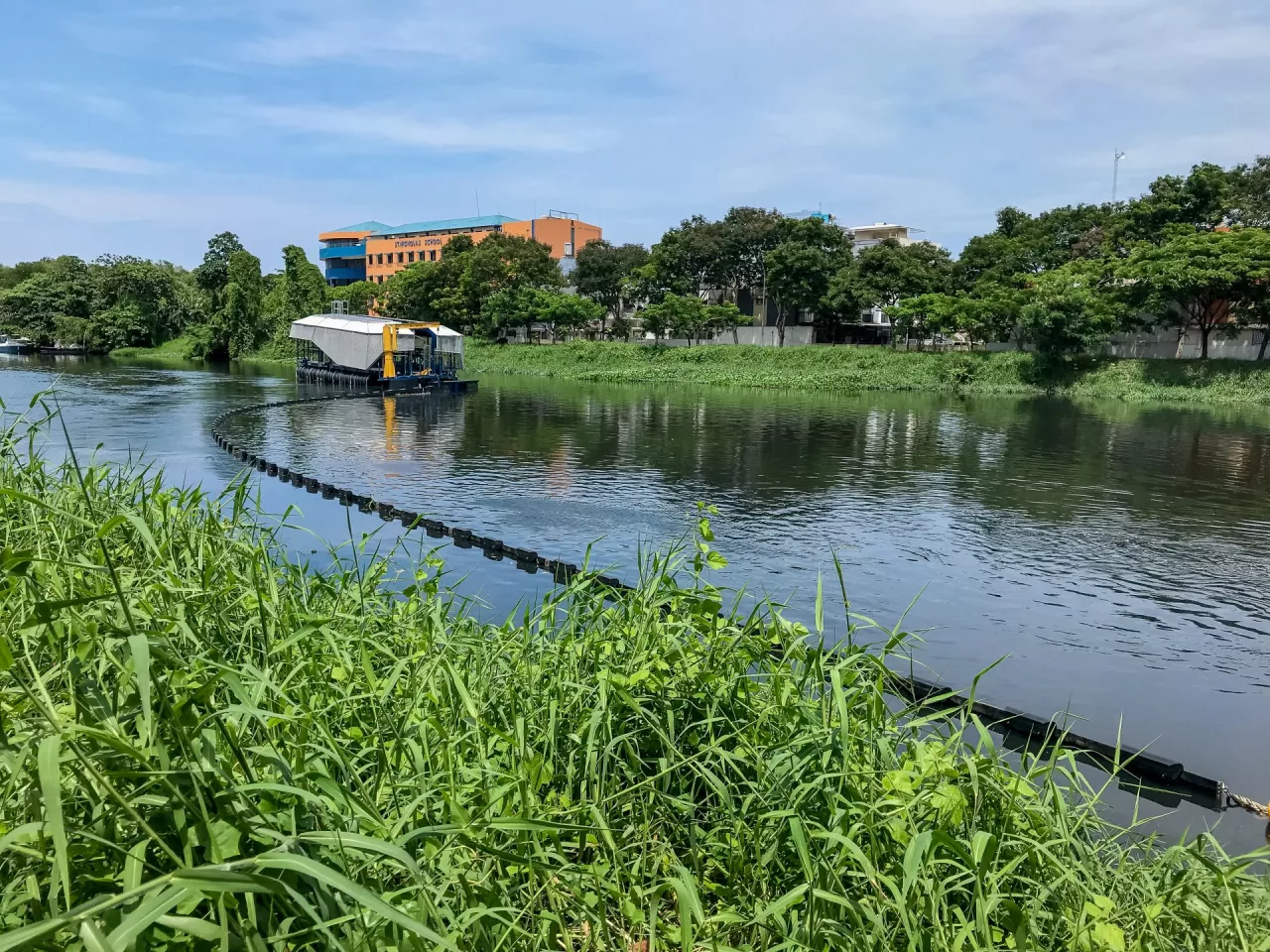
The Interceptor is essentially a catamaran that uses a long floating barrier to guide trash into its opening. This barrier only spans part of the river so that other vessels and marine life can pass, but is anchored to the riverbed in a position that uses the natural flow of the waterway to push trash towards the mouth of The Interceptor, where it piles onto a conveyor belt.
This conveyor belt filters out the trash and allows the water to keep flowing, feeding the rubbish into a set of onboard dumpsters. Sensors built into these dumpsters monitor their loads and push an alert to local operators when they need emptying, at which point the trash is passed off to traditional waste management facilities.
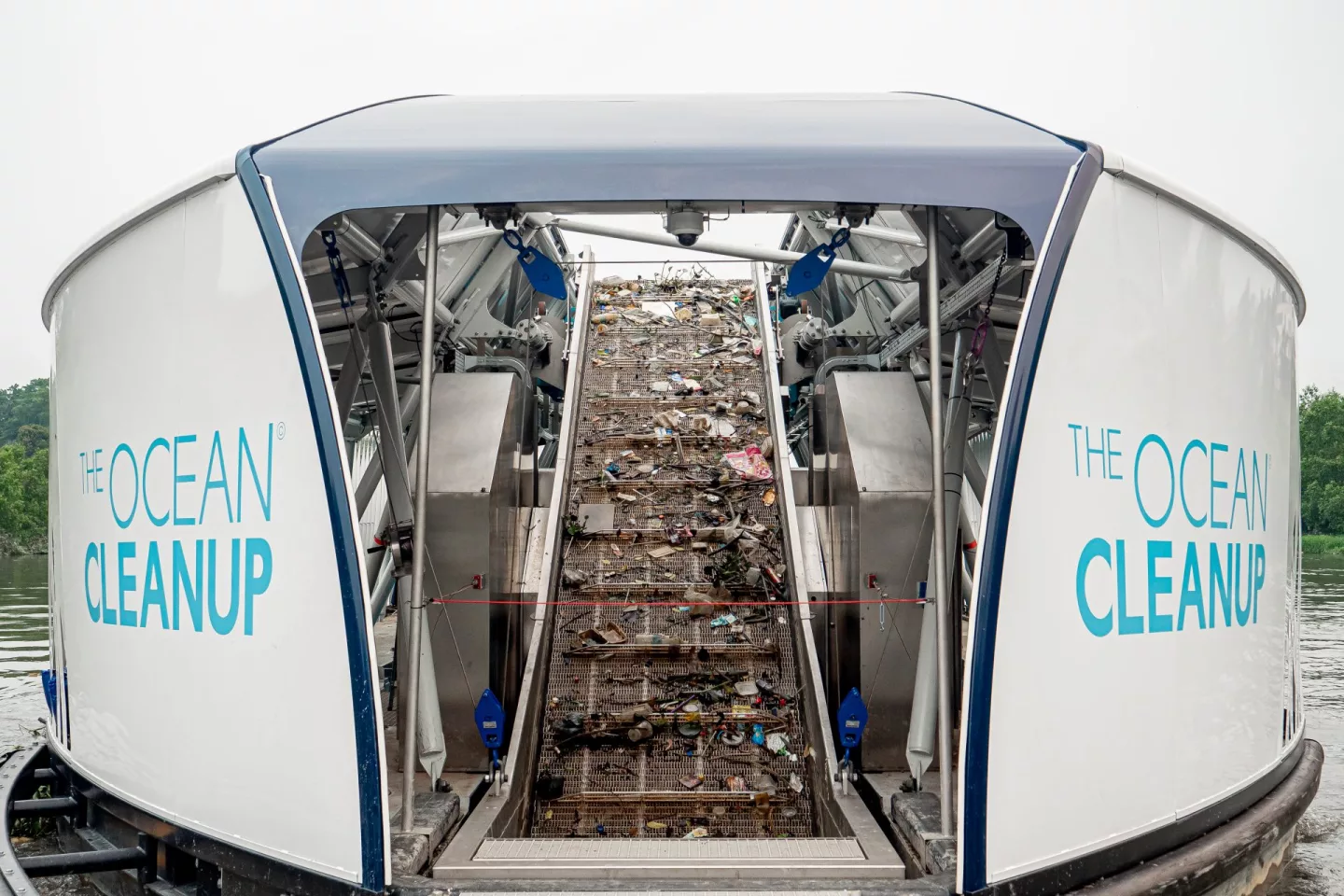
With onboard lithium batteries, the system is entirely solar-powered, which allows for 24/7 operation, and, according to the team, is capable of pulling out 50,000 kg (110,200 lb) of trash each day. When conditions are optimal, the team says it could even extract as much as 100,000 kg (220,400 lb).
The Ocean Cleanup has already built the first four Interceptors, with one installed in Jakarta and another in Kuala Lumpur. Having identified the 1,000 most heavily polluting rivers in the world, it has made it its mission to deploy solutions in all of these by 2025. Working with local authorities and private companies will be key to this, as it tailors the system to the local conditions on a case-by-case basis.
“To truly rid the oceans of plastic, we need to both clean up the legacy and close the tap, preventing more plastic from reaching the oceans in the first place. Combining our ocean cleanup technology with the Interceptor, the solutions now exist to address both sides of the equation,” says Boyan Slat, Founder and CEO of The Ocean Cleanup.
The video below offers an overview of The Interceptor system.
Source: The Ocean Cleanup
